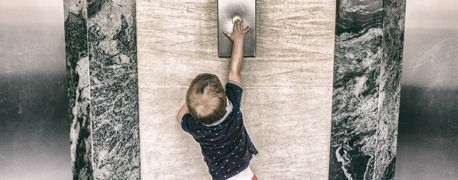What Causes a Bridge Collapse?

Most people don’t think about the number or condition of the bridges they cross every day on their commute, but they're incredibly crucial in safety and practicality. Bridges are vital components of transportation that carry road and rail traffic across bodies of water, gorges, overpasses, and other roads.
When a bridge collapses, it can cause massive traffic problems or strand people altogether, cutting off crucial services. Worse yet, those who are passing over or under the bridge when it collapses can be seriously hurt or killed.
That’s what happened on March 26, 2024, at the Port of Baltimore. A Singapore-flagged cargo ship named the Dali lost propulsion and collided with the Francis Scott Key Bridge, sending vehicles and people plummeting into the water below. Eight people fell into the Patapsco River; only two were rescued. Six, all members of a construction crew that was working on the bridge at the time of the collision and collapse, are still missing.
Common Causes of Bridge Collapse
There are approximately 617,000 bridges located across the United States. 42% of these are at least 50 years old, and 7.5% have been deemed structurally deficient by the Federal Highway Administration (FHA) as of 2021. With this alarming statistic looming, various factors can contribute to a bridge collapse, including:
Design Defects
These are bridges whose collapse is inevitable before the first vehicle traverses it. The fault lies not with the construction of the bridge, but with the design itself.
One of the worst bridge collapses in U.S. history occurred in 1981 as the result of a design defect when the crowded walkways of the Kansas City Hyatt Regency hotel collapsed, crashing onto the walkway that was directly below it before falling into the lobby. The collapse killed 114 people and was caused by a design defect in which structures were carrying double the loads they were intended to.
Fires
No amount of well-thought-out design plans or expertly executed construction can help a bridge that suffers a serious fire. Bridges most susceptible to collapse because of fire are those that carry trains, given the combustible materials used to power them. Several modern bridges have collapsed or been severely damaged due to fire.
One such example happened in 2009 when a tanker truck near Detroit suddenly burst into flames directly under a bridge. The resulting inferno collapsed the bridge completely and forced the closing of the highway.
Boat Impact
Given that many bridges provide passage over water, boats often travel underneath them. While boats don’t usually move as fast as trains or passenger vehicles, they are large in mass, which can spell disaster if they collide with the structure of a bridge. This is particularly true with cargo vessels like the 984-foot Dali.
In 1980, a devastating incident occurred when the Sunshine Skyway bridge, spanning between St. Petersburg and Bradenton, was hit by the large Summit Venture freighter. This collision resulted in a tragic loss of life, with 35 people in vehicles and on a bus perishing as a 1,200-foot section of the bridge gave way after a central support pier was compromised.
Floods
Rising water can cause a bridge to collapse either by piling huge amounts of debris on it and forcing it down, or by wearing the structure out slowly over time, sometimes referred to as scour.
In 1987, The Schoharie Creek Bridge which carried the New York State Thruway over a creek underwent flooding which caused high water levels. This washed sediment out from under one of the bridge piers, causing it to fall into a hole nearly 10 feet deep. 10 people died in the resulting bridge collapse.
Responsibility for Bridge Collapse
Accountability for a bridge collapse may lie with the entity responsible for designing, building, or maintaining the bridge, or with a third party such as the owner or operator of a vessel that strikes a bridge.
If you or someone you know was injured or killed during a bridge collapse caused by a design defect, fire, boat impact, flood, or any other reason, you may be able to file a claim if those responsible for the bridge were negligent in maintaining it. Contact us for a free consultation to go over your case. There is no fee unless we win.


